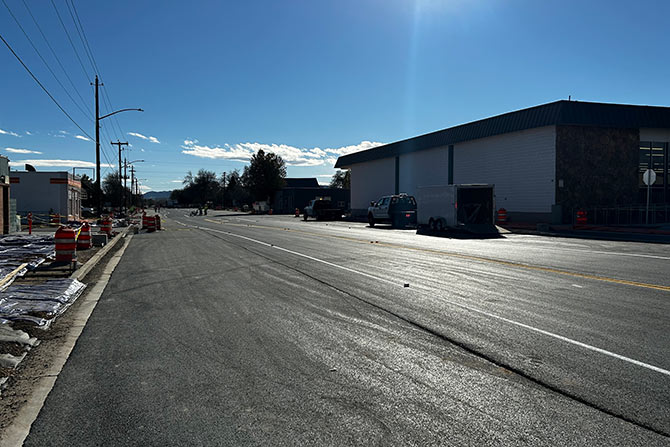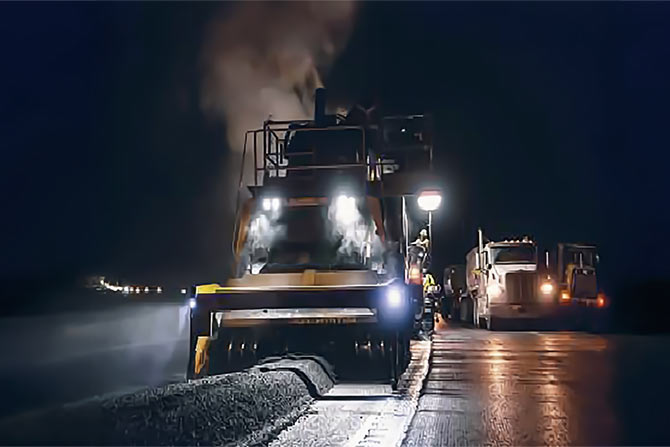Project Location: Vernal, UT
Project Total Contract Price: $1,905,649
Project Start: June 2024
Project Completion: December 2024
Key Project Team Members:
Keith Despain, Eric Dilworth and Quinn Bennion, Vernal City
Jack Lyman, Sunrise Engineering
Larry Montoya, UDOT
Cody Messersmith, TNT Construction
Burdick Materials
Project Overview
The Vernal Avenue project is part of an overall effort to improve the downtown area of Vernal, Utah. The objectives of the project were to improve the pedestrian experience with wider sidewalks, better aesthetics and easier access to businesses. The introduction of diagonal parking increased the parking stall count significantly. A mid-block crossing connects two public parking areas, providing greater and safer access for patrons of several downtown businesses. Pedestrian access routes have also been added to make the downtown area more walkable and inviting to those accessing the area.
What Makes the Project Unique
Prior to the project, Vernal Avenue had a very pronounced crown, which gave drivers approaching some very steep slopes. This project was designed to completely remove the crown and give the new road a single slope from west to east gutters. Because so much material was removed from the road profile (2 feet in some areas) and to reduce project costs, a cement-treated asphalt base was called for. This required cement powder and water to be tilled into the top 6 inches of the soil and a cure time given. At the prescribed time, the cement slab was fractured and then ready for asphalt paving.
Safety Record on the Project
Vernal Avenue is a well-traveled road and project specs required a lane to remain open in each direction. Businesses remained open during construction, requiring pedestrian traffic near the work. Effective traffic control plans were implemented from the start of the project and were changed as project needs fluctuated. TNT did a great job of communicating with business owners throughout the project, keeping them abreast of the impacts the construction could have. Comprehensive public information was provided to help make the traveling public aware of detours or other potential disruptions that might arise. As a result of these proactive measures, the project was completed without any accidents or safety incidents, highlighting the team’s commitment to safety and careful planning.
Project Quality
The project faced several challenges that required significant effort to resolve, one of which involved modifying the road’s elevation. The existing road was designed as a typical crowned road, and the plan was changed to a single-slope profile. This adjustment lowered the elevation on the east side, exposing the water line to the frost zone. As a result, we had to lower the water line, causing a delay of several weeks. This setback pushed the paving schedule into late fall, creating concerns about achieving the required quality under potentially unfavorable weather conditions. Fortunately, a mild autumn provided temperatures conducive to cement-treated base and asphalt paving, enabling us to deliver a high-quality product. The transitions to existing asphalt roadways at intersections were smooth, and the work met all UDOT standards for density and smoothness, ensuring a durable and well-integrated final surface.







